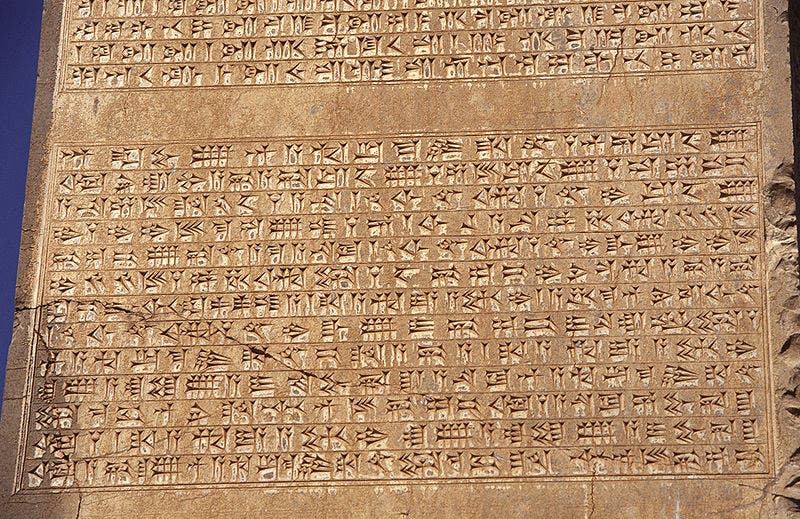
Researchers are using a very modern solution to understand one of the world’s most ancient languages.
A team of historians from two universities in Israel are using artificial intelligence to read broken passages in the Akkadian language, the oldest known Semitic language. Akkadian was spoken in the ancient Mesopotamian empires between 4,500 and 2,400 years ago, and has been preserved on clay tablets.
However, the passage of time hasn’t always been kind on these tablets, and they’ve often suffered damage such as cracks and breaks — which obviously make some of the text unreadable. Now, experts from Ariel University, the Israeli Heritage Department, and Bar Ilan University are working to train artificial intelligence (AI) to read the Akkadian script, a series of wedge-shaped marks known as cuneiform writing.
The Babylonian Engine is accessible online for anyone to upload and analyze cuneiform transliterations.
Cuneiform to Latin script
We’ve all at one point had a hard time with our writing assignments for school — but reading something can prove even more frustrating, especially when it was penned thousands of years ago. That’s why the team was hard at work digitizing the tablets in order to make them more readable and preserve them for future generations. The digitized texts were then analyzed and fed through a tool dubbed ‘the Babylonian Engine’.
This piece of software relies on machine learning to understand the script and is then used to translate what’s visible, filling in areas where the text was damaged. One of the quirks of cuneiform is that it is polyvalent, so each sign has more than one possible meaning. Appropriately interpreting each sign is a function of what characters precede and follow it.
The researchers hope to refine their system to the point where it can translate whole cuneiform texts and auto-complete the missing bits.
The quickest impact in fact is pedagogical since students of Akkadian can use this tool to train in reading and restoring ancient texts,” says Shai Gordin, a senior lecturer at Ariel University, and first author of the paper. Moreover, historians with less formal training in Akkadian can try and enter Akkadian text and get results which are citable in their research and publications.
For scholars of ancient Near Eastern history this tool can help with their work on text editions and going back to earlier publications in an attempt to restore broken sections of texts.
The people of Mesopotamia were very thorough record-keepers, and these clay texts can help us piece together their political, economic, and social history, the team explains. Having an AI on hand that can handle large-scale translation and reconstruction quickly and accurately would be a huge boon to our efforts at studying the ancient culture.
The software isn’t at all limited to Akkadian. The algorithm that powers it can just as easily be trained with other languages and types of script. For now, however, it can only work with languages that follow the same format as Akkadian, so it’s currently better suited to ancient languages than the more refined, newer types. The team is currently working on further developing the algorithm to make it function with different formats
But we are focusing more on ancient history at any rate,” Gordin admits, “since there is the place where heritage is mostly in danger of being lost for good.
The paper “Reading Akkadian cuneiform using natural language processing” has been published online in the journal PLOS ONE.









